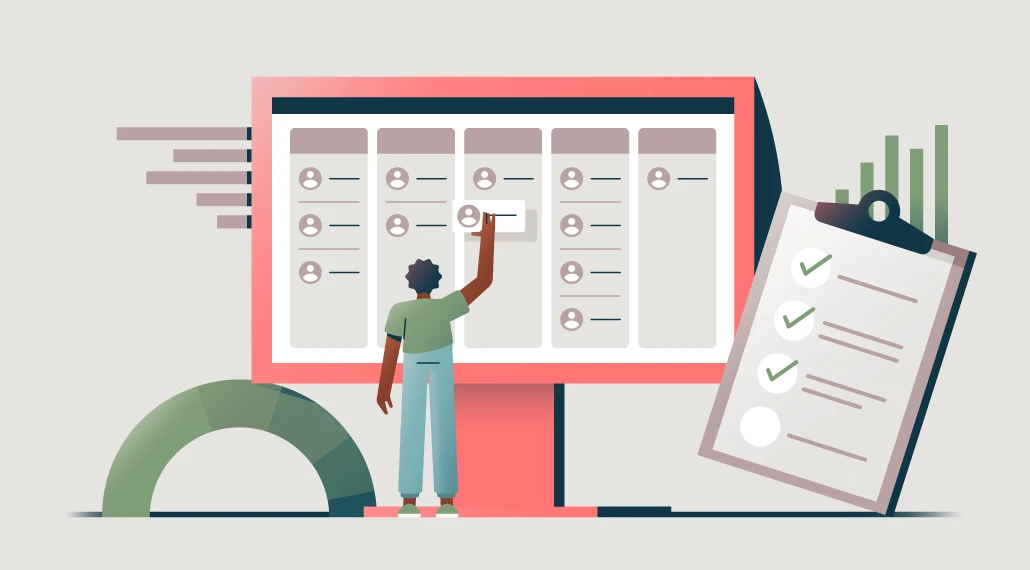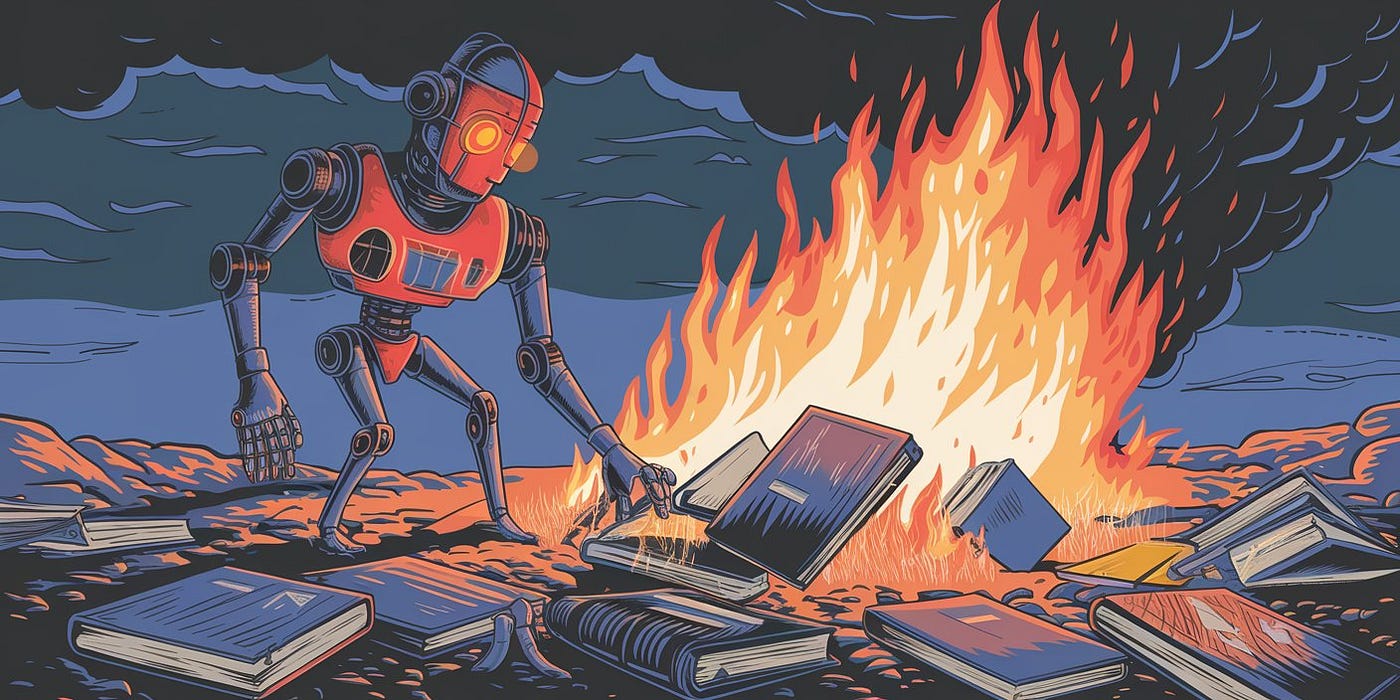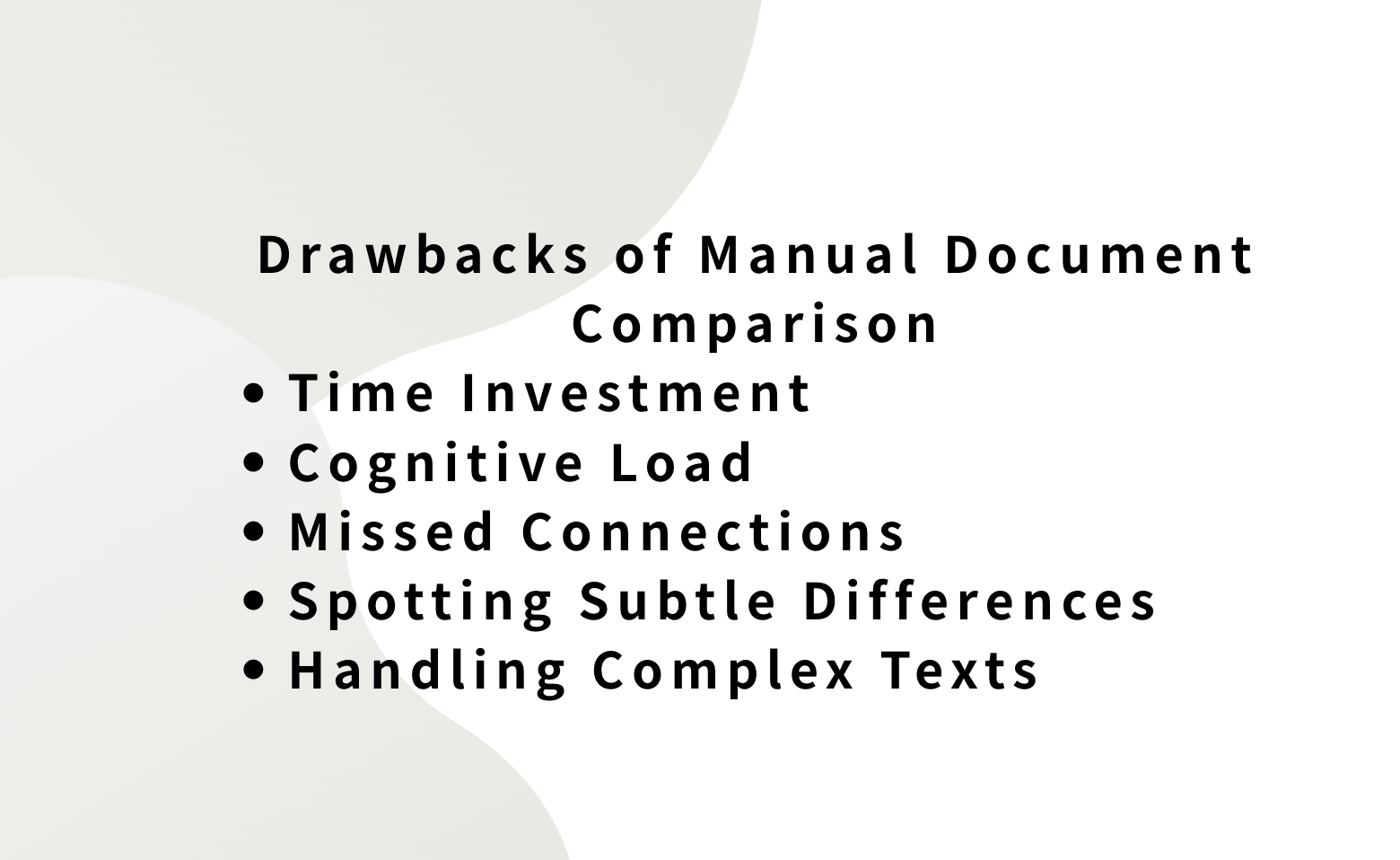
The Pitfalls of Traditional Literature Analysis
Overlooking Advanced AI Capabilities
When it comes to literature analysis, many researchers and students are still stuck in the dark ages, relying on highlighters, sticky notes, and endless hours of manual review. But here's the thing: you're probably missing out on the incredible power of advanced AI capabilities.
Traditional methods of literature analysis are like trying to build a skyscraper with a hammer and nails. Sure, it might get the job done eventually, but at what cost? Time, effort, and potentially overlooked insights are all at stake. AI-powered tools, on the other hand, are like having a team of expert builders at your fingertips.
These advanced systems can process vast volumes of text in minutes, offering several benefits:
Identifying key themes
Extracting relevant quotes
Drawing connections between different sources
Saving time and effort
Uncovering hidden insights
By overlooking these capabilities, you're essentially handicapping your research potential. It's time to put down the highlighter and embrace the future of literature analysis.
Ignoring Visual Knowledge Mapping
If you're still relying solely on text-based notes and linear summaries, you're missing out on one of the most powerful tools in modern literature analysis: visual knowledge mapping. The human brain is wired to process visual information more quickly and effectively than text alone. By ignoring this fact, you're making your analysis harder than it needs to be.
Visual knowledge mapping transforms complex information into interactive, easy-to-digest visual representations. Imagine being able to see the relationships between different concepts, authors, and ideas at a glance. That's the power of tools like Ponder, which can automatically convert dense academic papers into structured knowledge maps.
These visual maps don't just make information easier to understand; they also enhance retention and recall. When you can visualize the connections between different elements of your research, you're more likely to remember them and draw innovative conclusions. By sticking to traditional text-based methods, you're not just slowing down your analysis – you're potentially limiting your understanding and creativity.
Inefficient Document Comparison Techniques
Manual Side-by-Side Comparison Drawbacks
Let's be honest, if you're still comparing documents manually, side-by-side, you're doing it wrong. This method is not just time-consuming; it's also prone to human error and oversight. The drawbacks of manual comparison are numerous:
Excessive time investment
High cognitive load
Increased risk of missing important connections
Difficulty in spotting subtle differences
Limited ability to handle complex academic texts
Moreover, manual comparison often leads to a superficial analysis. You might catch obvious similarities in methodology or conclusions, but what about the subtle differences in argumentation or the nuanced use of terminology? These are the kinds of insights that can elevate your research, but they're easily overlooked when you're bogged down in manual comparison.
Missed Opportunities in Cross-Reference Analysis
If you're not leveraging AI-powered tools for cross-reference analysis, you're missing out on a goldmine of insights. Cross-referencing is about more than just identifying similar passages or shared citations. It's about uncovering the intricate web of relationships that exist within and between academic works.
Traditional methods of cross-referencing are limited by human cognitive capacity. We can only hold so many ideas in our heads at once, which means we're likely to miss connections that aren't immediately obvious. AI doesn't have this limitation. It can analyze hundreds or even thousands of documents simultaneously, identifying patterns and relationships that would be impossible for a human to spot.
These hidden relationships can be game-changers in your research. They might reveal unexpected influences, highlight emerging trends in your field, or even point to gaps in the existing literature that your work could fill. By relying on manual methods, you're not just making your job harder – you're potentially missing out on the very insights that could set your research apart.
Underutilizing Integrated Research Workflows

Fragmented Research Processes
If your research process looks like a digital version of a messy desk – with multiple apps, countless browser tabs, and files scattered across your desktop – you're doing it wrong. This fragmented approach to research is not just inefficient; it's actively hindering your ability to produce high-quality work.
The solution? An all-in-one research workspace. Tools like Ponder integrate all aspects of the research process – from search and reading to note-taking and writing – into a single, cohesive platform. This integrated approach not only saves time but also promotes deeper, more insightful analysis by keeping all your research materials and thoughts in one place.
Neglecting AI-Assisted Question Answering
If you're still relying solely on static note-taking, you're missing out on one of the most powerful features of modern literature analysis tools: AI-assisted question answering. Traditional note-taking is like creating a map of your research landscape. It's useful, but it's also static and limited by what you thought to write down at the time.
AI-assisted question answering, on the other hand, is like having a knowledgeable guide who can answer any question about that landscape, drawing on information from all the sources you've analyzed. This dynamic approach to information retrieval can dramatically enhance your research process.
Imagine being able to ask complex questions about your research materials and receiving instant, context-aware answers. No more flipping through pages of notes or scrolling through multiple documents. With AI-assisted tools, you can explore your research materials in depth, uncovering new insights and connections that might not have been apparent through traditional note-taking alone.
Rigid Knowledge Organization Methods
Linear Note-Taking Limitations
If you're still organizing your research notes in a linear fashion – whether it's in a notebook or a digital document – you're limiting your analytical potential. Linear note-taking might seem logical and straightforward, but it fails to capture the complex, interconnected nature of academic knowledge.
This is where flexible, AI-assisted mind mapping comes in. Tools like Ponder allow you to create dynamic, non-linear representations of your research. You can easily link related concepts, even if they come from different sources. This approach not only helps you see the big picture of your research but also encourages creative thinking by making unexpected connections more visible.
Overlooking Adaptive Learning Flows
If your research process follows a rigid, one-size-fits-all approach, you're doing yourself a disservice. Every researcher has a unique learning style and every project has its own quirks. By overlooking adaptive learning flows, you're missing out on a more efficient and effective way to conduct your literature analysis.
Tools like Ponder are designed to adapt to your individual learning style and the specific needs of your project. They can suggest relevant papers based on your current focus, help you build a framework of understanding before diving into details, and guide you towards deeper exploration as your knowledge grows.
Misunderstanding AI's Role in Literature Analysis

Overreliance on Generic AI Responses
While AI has revolutionized many aspects of academic research, there's a dangerous trend of overreliance on generic AI responses for literature analysis. If you're turning to general-purpose AI chatbots for your academic research, you're likely getting responses that lack the depth and specificity needed for serious scholarly work.
The key is to use AI tools that are specifically designed for academic research and trained on relevant, peer-reviewed literature. For instance, Ponder's AI is trained on over 200 million academic papers, ensuring that its responses are grounded in scholarly knowledge. This specialized training allows it to provide more accurate, nuanced, and authoritative assistance in literature analysis.
Neglecting human-AI collaboration
There's a common misconception that AI tools are meant to replace human analysis in literature review. This couldn't be further from the truth. If you're either completely relying on AI or entirely dismissing it, you're missing out on the power of human-AI collaboration.
The most effective literature analysis comes from a synergy between human intelligence and AI capabilities. AI can help you quickly sift through large volumes of literature, identify key themes and connections, and even suggest new avenues of inquiry. But it's up to you to interpret this information, draw meaningful conclusions, and develop original insights.
Misuse | Consequence | Solution |
|---|---|---|
Manual document comparison | Time-consuming, prone to oversight | Use AI-powered multi-document analysis |
Linear note-taking | Misses complex relationships | Implement flexible, AI-assisted mind mapping |
Fragmented research process | Inefficient, disrupts thought flow | Adopt an integrated research workspace |
Overreliance on generic AI | Shallow, potentially inaccurate analysis | Use domain-specific AI trained on academic papers |
